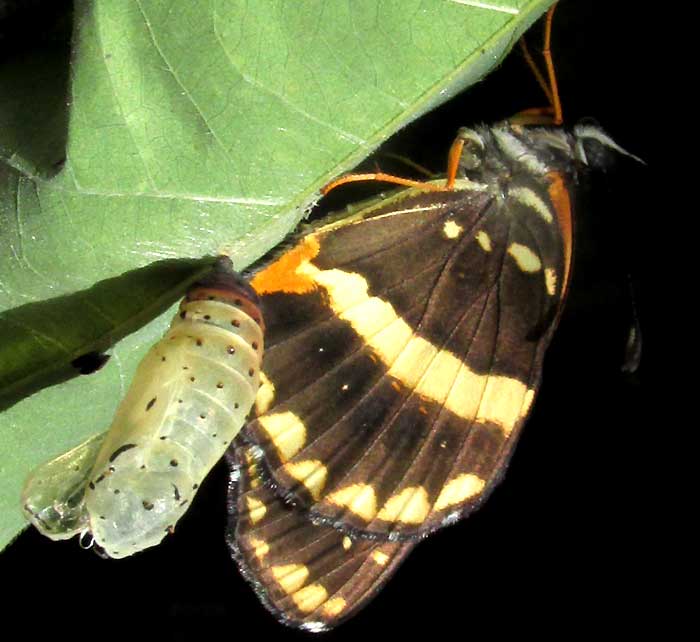Excerpts from Jim Conrad's
Naturalist Newsletter
Entry issued on August 24, 2019, from the forest just west of Tepakán; elev. ~9m (~30 ft), N21.053°, W89.052°; north-central Yucatán state, MÉXICO
BORDERED PATCH
Here in the middle of a rainier than usual rainy season, the butterfly shown below probably is the most abundant of all butterfly species in weedy areas:

That's a Bordered Patch, CHLOSYNE LACINIA, a common species from the southern US south through all of Mexico and Central America, to Bolivia and Argentina in South America. Covering such a large area, it's represented by four subspecies, each differing greatly from the others in appearance. Below, a side view is shown of an old, rather faded adult:

This week a very pale yellow-green pupa, or chrysalis, turned up suspended dangling from the bottom of a stick-tight plant (genus Desmodium) right in front of my hut. I checked it each morning, until one morning overnight it had turned almost black, indicating that the adult was about to emerge. I bet with myself that a Bordered Patch would emerge, strictly because so many of that species are flitting about the door. By mid morning, the fresh new adult had escaped from its pupal shell, and it was indeed a Bordered Patch. Below, you can see the old chrysalis skin with the new butterfly beside it, the butterfly so young that its wings aren't yet stiff enough to fly away:

More than anyplace I see Bordered Patches in weedy areas populated mostly by herbaceous members of the Composite/Sunflower Family, and some big sunflowers stand right in front of my door, so that's a perfect place for them. In fact, another English name often used for the Bordered Patch is Sunflower Patch. My door-side sunflowers are heavily infested with numerous tiny, spiny, black caterpillars, and I'm making another bet that in a few days -- when they're older and displaying more field marks -- I'll have those black caterpillars identified as those of the Bordered Patch.